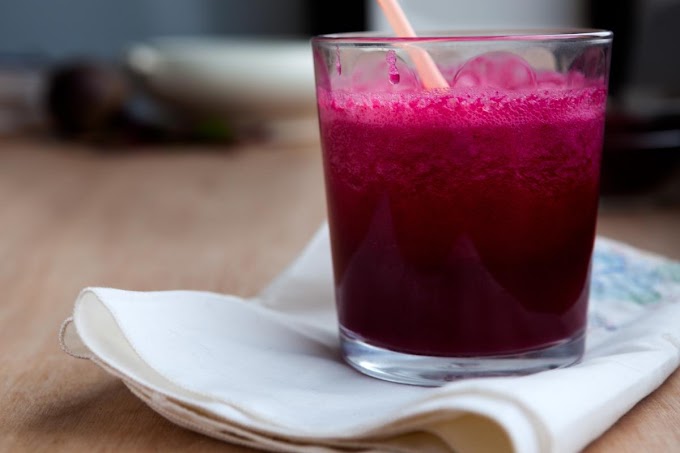Soup is the ultimate comfort food, warming the soul and filling the belly. But there’s something extra special about a soup that's thick and creamy. The rich texture feels indulgent and makes each spoonful satisfying. Fortunately, creating a thick and creamy soup doesn’t require heavy cream or complicated techniques. There are many ways to achieve that luxurious consistency using simple ingredients and techniques, including dairy-free and health-conscious options.
In this blog, we’ll explore several methods to make your soup thick and creamy without altering its flavor too much. From traditional techniques to creative alternatives, you’re sure to find something that works perfectly for the soup you’re crafting.
1. Classic Cream and Butter
One of the most straightforward ways to thicken soup is by adding dairy. Cream and butter are go-to ingredients for this method:
Heavy Cream: Stirring in a small amount of heavy cream at the end of cooking gives soup a smooth and thick texture. For most soups, ¼ to ½ cup is usually enough to add thickness and richness. Always add cream gradually and simmer gently after adding to avoid curdling.
Butter: A few tablespoons of butter can help create a velvety texture and add depth of flavor, particularly when it’s stirred in at the end.
This method is ideal for creamy soups like tomato bisque or cream of mushroom, where a little richness enhances the soup’s flavor.
2. Make a Roux
Roux is a classic thickening agent made by cooking equal parts flour and fat (usually butter):
How to Make a Roux: In a separate pan, melt a few tablespoons of butter and whisk in an equal amount of flour. Cook this mixture for a few minutes until it turns golden, then add it to your soup, stirring constantly.
Cooking Tips: Add the roux at the beginning of cooking so it has time to integrate into the soup. A roux is especially useful for thicker, more structured soups like chowders or bisques.
This technique creates a creamy, hearty consistency without changing the flavor.
3. Add Starches for Creaminess
Starchy ingredients like potatoes, rice, and beans are fantastic for thickening soup naturally:
Potatoes: Dice a few potatoes and add them to the soup as it simmers. They will naturally break down, thickening the soup and adding body.
Rice: Rice, especially white or Arborio rice, adds a smooth thickness when it cooks and releases starch. Add it early and allow it to simmer fully, then blend part of the soup if you want a smoother texture.
Beans: Blended beans make an excellent thickener. White beans are especially mild, adding creaminess without a strong bean flavor.
These options work well for veggie soups or hearty stews, providing a nutrient boost along with thickness.
4. Purée the Soup
If your soup includes vegetables, blending some or all of it can give it a smooth and creamy texture:
Immersion Blender: Use an immersion blender to partially blend the soup, leaving some chunks for texture. This is ideal for chunky vegetable soups.
Traditional Blender: For a fully smooth soup, blend in batches using a regular blender, then return to the pot and reheat if needed.
This method works especially well for soups like butternut squash, potato leek, and tomato, where the flavors meld nicely when puréed.
5. Use Coconut Milk or Coconut Cream
Coconut milk and coconut cream are fantastic dairy-free alternatives that add richness without overwhelming flavors:
Coconut Milk: This option is perfect for soups with a global flair, like Thai-inspired or curry-based soups, where a hint of coconut complements the spices.
Coconut Cream: Thicker than coconut milk, coconut cream is ideal if you want a more intense creaminess.
These options add a tropical twist to soup and work wonderfully for vegan or dairy-free versions.
6. Add Nut or Seed Butters
Nut and seed butters like almond butter, peanut butter, or tahini can be added to soups to thicken and add creaminess:
Peanut Butter: Peanut butter works well in Asian-inspired soups, like a spicy peanut soup or certain Thai soups. Start with a small amount and stir in gradually to taste.
Tahini: This sesame seed paste is ideal for Middle Eastern soups or soups where you want a subtle, nutty flavor.
Nut and seed butters are packed with healthy fats and provide a unique depth to soup.
7. Use Cornstarch or Arrowroot
Cornstarch and arrowroot are excellent thickeners for those who want a gluten-free option:
Cornstarch Slurry: Mix a tablespoon of cornstarch with cold water to create a slurry. Stir it into the soup as it simmers, allowing it to thicken. Cornstarch is effective but can create a slightly glossy appearance.
Arrowroot Powder: Similar to cornstarch, arrowroot thickens soup without changing its color or flavor. It’s a good option for delicate soups where you want a subtle thickening effect.
Both of these options are excellent for quick thickening, especially when time is short.
8. Use Bread or Breadcrumbs
Bread has been athickening agent in soup for centuries, particularly in Mediterranean and European cuisines:
Bread: Tear stale bread into small pieces and add it directly to the soup. As it cooks, it will soften and dissolve, giving the soup a thick consistency.
Breadcrumbs: For an even quicker option, stir in breadcrumbs until the soup reaches your desired thickness.
This technique works well for tomato-based soups, garlic soup, or other rustic recipes.
9. Yogurt or Sour Cream for Tangy Creaminess
For a tangy, creamy effect, yogurt and sour cream add both texture and flavor:
Plain Yogurt: Stirring in a dollop of yogurt right before serving gives the soup a slight tang and smooth consistency. It’s best to use full-fat yogurt to avoid curdling.
Sour Cream: Sour cream works similarly to yogurt, offering a slightly richer flavor. Add it at the end to avoid separation.
These are ideal for cold soups, like cucumber soup, or lighter vegetable soups where a touch of tang enhances the flavors.
10. Cauliflower as a Low-Calorie Thickener
Cauliflower is a wonderful low-calorie ingredient that, when blended, can give soup a creamy texture:
How to Use Cauliflower: Add cooked cauliflower to the soup and blend until smooth. It’s particularly good in soups like cauliflower leek, broccoli cheddar, or potato soup.
Cauliflower’s mild flavor means it won’t overpower your soup, making it a versatile thickener for almost any recipe.
11. Add Cheese for Extra Creaminess
For a rich, cheesy soup, melt cheese directly into the broth for extra body:
Cheddar: Great for soups like broccoli cheddar, melting cheddar cheese into the soup adds thickness and a smooth, gooey texture.
Parmesan: A handful of grated Parmesan can elevate a vegetable soup and add both creaminess and depth.
Cheese is best added gradually and stirred until fully melted, ensuring it doesn’t clump.
Final Tips for Thickening Soup
Simmering: Allowing your soup to simmer can reduce excess water and naturally thicken it.
Balancing Flavors: Some thickening agents add flavors or richness, so taste the soup as you go to ensure the balance is right.
Experimenting: Don’t be afraid to try different combinations—potatoes with a touch of cream, or a roux with some cheese.
Thickening soup is about finding the right balance of texture and flavor. Whether you’re craving a creamy potato soup, a velvety tomato bisque, or a luxurious butternut squash soup, these methods provide you with plenty of ways to customize. Happy cooking, and enjoy the comforting embrace of a perfectly thick and creamy soup!








Social Plugin